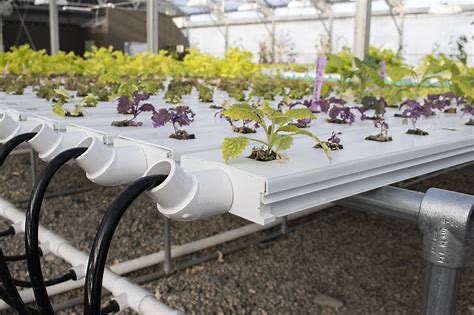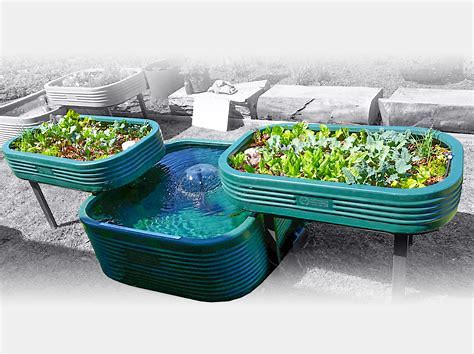
How to raise ph in aquaponics? Today I’m gonna talk to you about something important for all the gardeners out there, especially those who have a hydroponic system.
Have you ever heard of aquaponics? It’s a system that combines fish farming and plant cultivation. The fish waste provides nutrients for the plants, and the plants, in turn, filter the water for the fish. It’s like a little ecosystem where everyone helps each other out.
But sometimes, the pH level in aquaponics can be too low, making it difficult for the plants to grow. That’s why we’re here to help you learn how to raise the pH in aquaponics.
How To Raise pH in Aquaponics?

Are you interested in learning about aquaponics? Well, today we’re going to talk about something called “pH” and how to raise it in your aquaponic system.
Now, pH is a measure of how acidic or basic a substance is, and in aquaponics, it’s important to keep the pH between 6.8 and 7.2. If the pH gets too low (below 6.0), it can harm the fish, and if it gets too high (above 8.0), it can harm the plants.
So, how can we raise the pH if it’s too low? One way is to add a substance called “potassium hydroxide” or “potash.” This can be found in garden stores or online. Just be careful when handling it, as it can be dangerous if not used properly.
Another way to raise pH is to add crushed oyster shells or limestone to the system. These substances will dissolve slowly over time and release calcium carbonate, which will raise the pH.
Now, let’s talk about the pros and cons of using these methods. Adding potash is a quick and effective way to raise pH, but it can be dangerous if not used properly. Adding crushed oyster shells or limestone is a more natural method, but it can take longer to see results.
If you decide to use these methods, be sure to monitor the pH regularly to make sure it doesn’t get too high. And as always, be sure to do your research and read up on the subject before diving in.
So, who will benefit from reading this? Well, anyone who’s interested in aquaponics or gardening in general! Whether you’re a beginner or an experienced gardener, it’s always good to learn new tips and tricks.
So grab your gardening gloves and get ready to raise that pH!
How to Lower the pH Level in Aquaponics?
Let’s talk about the opposite: how to lower the pH level in your aquaponic system.
As we learned before, pH is important for the health of both the fish and plants in your aquaponic system.But sometimes, the pH can get too high, which can harm the plants. So, how can we lower the pH level?
One way is to add a substance called “vinegar,” which is a mild acid. By adding vinegar to the water, the pH level will gradually decrease. Just be sure to add it slowly and monitor the pH level regularly to avoid over-lowering the pH.
Another way to lower pH is to add “peat moss” to your aquaponic system. Peat moss is a natural material that is slightly acidic and can help to lower the pH. However, it can take several weeks to see the effects, so be patient!
It’s important to note that if your aquaponic system is already on the low end of the pH range (below 6.8), you should not use these methods, as they may cause the pH to drop too low and harm the fish.
So, what are the pros and cons of using these methods? Adding vinegar is a quick and easy way to lower the pH, but it can be tricky to get the right amount. Adding peat moss is a natural and slow method, but it takes longer to see results.
In conclusion, anyone who is interested in aquaponics or gardening can benefit from learning about how to lower pH in their aquaponic system. Just remember to monitor the pH regularly and be patient when using these methods. Happy gardening!
Conclusion
So, my young friends, now you know how to raise the pH in aquaponics. Remember, it’s important to monitor the pH level regularly and adjust it as needed.
Don’t be afraid to experiment and try different methods until you find what works best for your aquaponic system. ith a little patience and practice, you’ll be able to create a thriving ecosystem where your plants and fish can grow healthy and happy together. And if you have any questions or need further help, don’t hesitate to reach out to us or other experienced gardeners.
Happy gardening!
Was this helpful?

Crystal Erickson is an agriculture enthusiast and writer with a passion for sustainable farming practices and community development. Growing up on a family farm in rural Iowa, Crystal developed a love for the land and a deep appreciation for the hard work and dedication required to make a farm successful.
After completing a degree in Agriculture and Environmental Science from Iowa State University, Crystal began her career as an agricultural journalist, covering stories and issues related to modern farming practices, crop management, and livestock production. She quickly established herself as a respected voice in the industry, known for her insightful reporting and thoughtful analysis.
Over the years, Crystal has written for a variety of publications, including Farm Journal, Successful Farming, and Modern Farmer, as well as contributing to several academic journals focused on sustainable agriculture and community development. Her work has been recognized with numerous awards, including the Iowa Farm Bureau’s Young Farmer Achievement Award and the National Association of Farm Broadcasting’s Farm Broadcaster of the Year.
